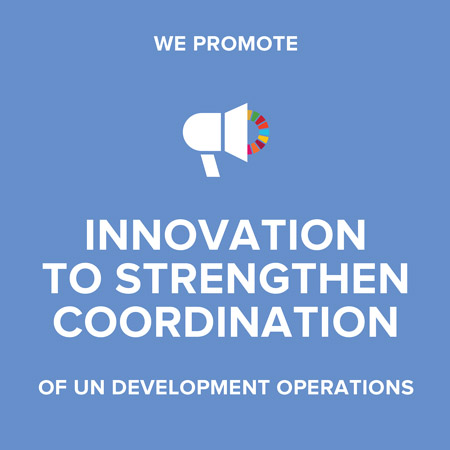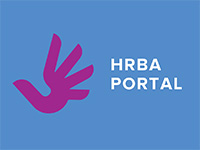BY Envesa Hodzic-Kovac
“How do you eat an elephant? One spoonful at a time.”
This saying applies to any undertaking whose size and proportions are immense. Where to start is daunting. For me, the Sustainable Development Goals — an ambitious set of goals agreed to by UN Members States that establishes milestones of growth & equality within the limits of the planet — are the elephant.
No poverty. Zero hunger. Reduced inequalities. Sustainable cities. Climate Action. Decent work. All by 2030. These are ambitious goals. They demand that different entities of the UN work together in new ways. In order to tackle them, we need to have a plan. We need to know where to start.
How do you prioritise different aspects of human development– all are important, and all are urgent, and all are long-term issues that cannot be solved with short-fixes. It is not just about the government doing their bit, it is really about all of us. We need individual action, communal action, citizen action. How to get people on board of complex agenda such as Sustainable Development Goals? And how to do it in a complex administrative set-up such as Bosnia and Herzegovina?
Strategic foresight to approach the enormity of the SDGs
In Bosnia and Herzegovina, the United Nations is using strategic foresight as part of its consultations process to build momentum for the Sustainable Development Goals. In order for us to start getting our heads around the 2030 Agenda, we needed a participatory planning process that gets beyond past and present to look into the future to create the future… it is a forward-looking approach aimed at using the future to create change in the present…”
Our work has built upon the work done in Montenegro, where UN colleagues have engaged with think-tanks, academia, statistical office and NGOs. They worked with disruptive innovators, digital champions and active youth to create alternative scenarios for Montenegro’s future.
Don’t call it a game gamification
We adapted the tool initially developed by the UN Montenegro for the post-2015 national consultations – they called it Enhanced Survey Tool – and it is exactly that, but with our adaptation it is also a collective problem solving tool. The tool looks and feels like a board game (I still remember the odd looks we would get when we placed it, unopened, on the table in front of our stakeholders before explaining what it was!).
We used our ‘game’ that we call SDG Consultations Tool with 600 people to gauge their positive and negative associations with the past and present, their visions for the future, the way they think about the future, what values, actions, structures and threats/opportunities they identify around specific SDG/Target and solutions/ideas how to address or accelerate achievement of the SDG/Target. Through this process, we collected over 80 ’bright ideas’ that we will present to at the high level SDG Conference with policy makers as accelerating solutions that people collectively envisaged to meet targets and SDGs in our country context. The game also generates demographic data so we can disaggregate the priorities, values actions and institutional suggestions from all who engaged in this participatory process.
We also conducted a postcards from the future campaign in order to get people thinking in an imagined space of what futures could or should be. We now have over 200 tangible artifacts from the future that are personal to people in BiH. Check out our facebook page for more on this.
The future of the future
At a minimum, everyone who has played the SDG game now knows what all of the SDGs are, and has a personal association with them. This is no small accomplishment. Getting people to wrap their heads around 169 targets can result in a rote type exercise. This tool helped us get out of that limitation. The tool also helped us all see the incredible interconnectedness of the 2030 Agenda and the approaches that we need to take to achieve them.
Sustainable development requires a future-orientation. This tool helped us get people in Bosnia & Herzegovina into a creative space. A lesson learned about introducing strategic foresight to others is to try to minimise explaining what it is. It works best when it is applied and used immediately. A ‘deep dive’ into strategic foresight works well since the approach we have used is very intuitive and people get it the moment they get immersed in it.
Foresight helped us move beyond thinking that the future has to be an extension of the present. And beyond thinking that forecasting is exclusively based on quantitative data. The next step would be us to support a shift among our partners in the government institutions responsible for planning towards regularized human-centered, citizen derived data about the future, alongside data driven modelling which they may already be using.
We found that foresight not only helps you think collectively about the future but also makes a dent in overcoming contexts where participatory planning is difficult. We are all equals when it comes to the future – by design no one voice can dominate. And this is a good start to Agenda 2030 that vows to leave no one behind.
National ownership
The Government of Brazil has been a long-standing champion of sustainable development as the host of the 1992 Earth Summit and the 2012 Rio+20 Conference. The Brazilian Institute of Geography and Statistics (IBGE) has represented the Mercosur countries and Chile on the Inter-Agency and Expert Group on Sustainable Development Indicators and has been elected as the new Chair of the UN Statistical Commission, actively contributing to the task of developing the SDG indicators at the global level. Both IBGE and the Interministerial Working Group on the Post-2015 Development Agenda — encompassing 27 ministries and bodies of federal administration — have undertaken consultations with different stakeholders to reflect Brazil’s contribution to implementing the SDGs.
Inclusive participation
The UNDP World Centre for Sustainable Development (RIO+ Centre) relaunched the Rio Dialogues space in 2015 with a focus on an interactive SDG space for Brazilian youth to learn about the SDGs and how to get involved. There have been several outreach and live events to help support the effort, which has attracted considerable interest from universities and other groups. In 2016, for the implementation of the 2030 Agenda, there has been intense work to design a new institutional arrangement at the national level, with the aim of involving different stakeholders in implementing and following up the 2030 Agenda, including the SDGs.
Institutional coordination
The Task Force on the Post-2015 Development Agenda (whose name was later changed to Task Force on the 2030 Agenda) was established in December 2014 to facilitate cooperation between the Brazilian federal government and UN entities on the issues of the new agenda. The Task Force is co-chaired by the Brazilian federal government, represented by the Ministry of External Relations, and brings together a full complement of UN entities including UNDP, the Food and Agriculture Organization (FAO), UNESCO, UNFPA, UN Women, the Economic Commission for Latin America and the Caribbean (ECLAC), the PanAmerican Health Organization (PAHO)/WHO, UNODC, UNIDO, the Joint United Nations Programme on HIV/AIDS (UNAIDS), the United Nations Office for Project Services (UNOPS), ILO, UN-Habitat, the United Nations Office for Disaster Risk Reduction (UNISDR-CERRD), UNICEF, the United Nations Environment Programme (UNEP), UNV, the World Food Programme (WFP) and the International Policy Centre for Inclusive Growth (IPC-IG)/UNDP. In addition, the Brazilian Committee of the Global Compact Network is an observer member representing the private sector.
Monitoring and reporting
One of the main purposes of the Task Force is to contribute to identifying national social, economic and environmental indicators related to specific SDGs and their targets. In September 2015, the Task Force issued its publication ‘Following-up the 2030 Agenda for Sustainable Development: Initial inputs from the United Nations System in Brazil on the identification of national indicators related to the Sustainable Development Goals’. Sixteen thematic groups covering SDGs 1–16 worked over nine months to produce the report, identifying around 570 indicators and highlighting data gaps regarding relevant information needed to follow up certain SDG targets. In 2016, the Task Force is planning to review its publication in light of the global indicator framework. This publication presented available national indicators as inputs for the follow-up process on the SDGs targets, which will be led by the Brazilian government.
The Task Force will also launch a set of glossaries containing key terms and expressions used in the formulation of the SDGs and their targets.

 UNDGSustainable Development Goal 1: End poverty in all its forms everywhere
UNDGSustainable Development Goal 1: End poverty in all its forms everywhere UNDGSustainable Development Goal 2: End hunger, achieve food security and improved nutrition, and promote sustainable agriculture
UNDGSustainable Development Goal 2: End hunger, achieve food security and improved nutrition, and promote sustainable agriculture UNDGSustainable Development Goal 3: Ensure healthy lives and promote well-being for all at all ages
UNDGSustainable Development Goal 3: Ensure healthy lives and promote well-being for all at all ages UNDGSustainable Development Goal 4: Ensure inclusive and equitable quality education and promote lifelong learning opportunities for all
UNDGSustainable Development Goal 4: Ensure inclusive and equitable quality education and promote lifelong learning opportunities for all UNDGSustainable Development Goal 5: Achieve gender equality and empower all women and girls
UNDGSustainable Development Goal 5: Achieve gender equality and empower all women and girls UNDGSustainable Development Goal 6: Ensure availability and sustainable management of water and sanitation for all
UNDGSustainable Development Goal 6: Ensure availability and sustainable management of water and sanitation for all UNDGSustainable Development Goal 7: Ensure access to affordable, reliable, sustainable and modern energy for all
UNDGSustainable Development Goal 7: Ensure access to affordable, reliable, sustainable and modern energy for all UNDGSustainable Development Goal 8: Promote sustained, inclusive and sustainable economic growth, full and productive employment, and decent work for all
UNDGSustainable Development Goal 8: Promote sustained, inclusive and sustainable economic growth, full and productive employment, and decent work for all UNDGSustainable Development Goal 9: Build resilient infrastructure, promote inclusive and sustainable industrialisation, and foster innovation
UNDGSustainable Development Goal 9: Build resilient infrastructure, promote inclusive and sustainable industrialisation, and foster innovation UNDGSustainable Development Goal 10: Reduce inequality within and among countries
UNDGSustainable Development Goal 10: Reduce inequality within and among countries UNDGSustainable Development Goal 11: Make cities and human settlements inclusive, safe, resilient and sustainable
UNDGSustainable Development Goal 11: Make cities and human settlements inclusive, safe, resilient and sustainable UNDGSustainable Development Goal 12: Ensure sustainable consumption and production patterns
UNDGSustainable Development Goal 12: Ensure sustainable consumption and production patterns UNDGSustainable Development Goal 13: Take urgent action to combat climate change and its impacts
UNDGSustainable Development Goal 13: Take urgent action to combat climate change and its impacts UNDGSustainable Development Goal 14: Conserve and sustainably use the oceans, seas and marine resources for sustainable development
UNDGSustainable Development Goal 14: Conserve and sustainably use the oceans, seas and marine resources for sustainable development UNDGSustainable Development Goal 15: Protect, restore and promote sustainable use of terrestrial ecosystems, sustainably manage forests, combat desertification and halt and reverse land degradation, and halt biodiversity loss
UNDGSustainable Development Goal 15: Protect, restore and promote sustainable use of terrestrial ecosystems, sustainably manage forests, combat desertification and halt and reverse land degradation, and halt biodiversity loss UNDGSustainable Development Goal 16: Promote peaceful and inclusive societies for sustainable development, provide access to justice for all and build effective, accountable and inclusive institutions at all levels
UNDGSustainable Development Goal 16: Promote peaceful and inclusive societies for sustainable development, provide access to justice for all and build effective, accountable and inclusive institutions at all levels UNDGSustainable Development Goal 17: Strengthen the means of implementation and revitalise the global partnership for sustainable development
UNDGSustainable Development Goal 17: Strengthen the means of implementation and revitalise the global partnership for sustainable development














































